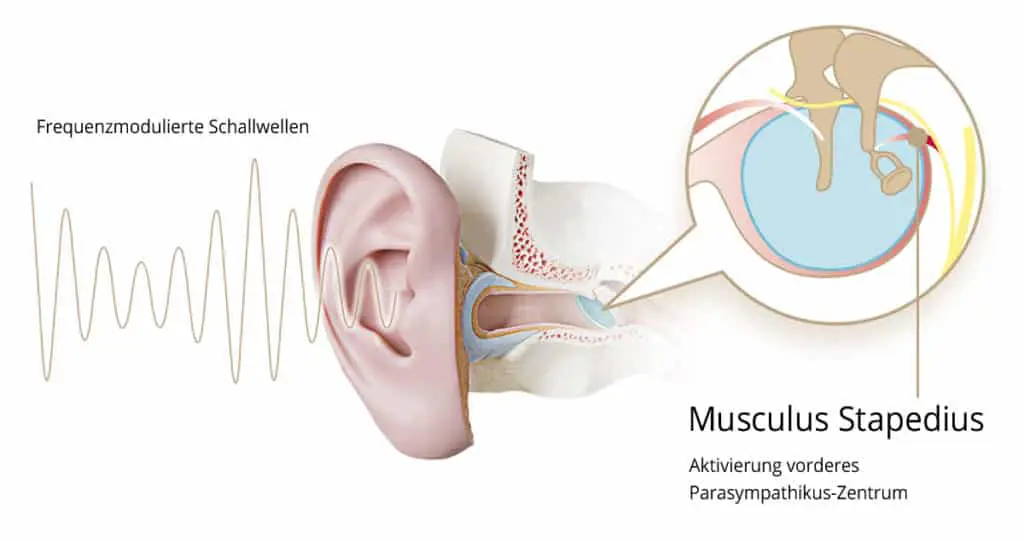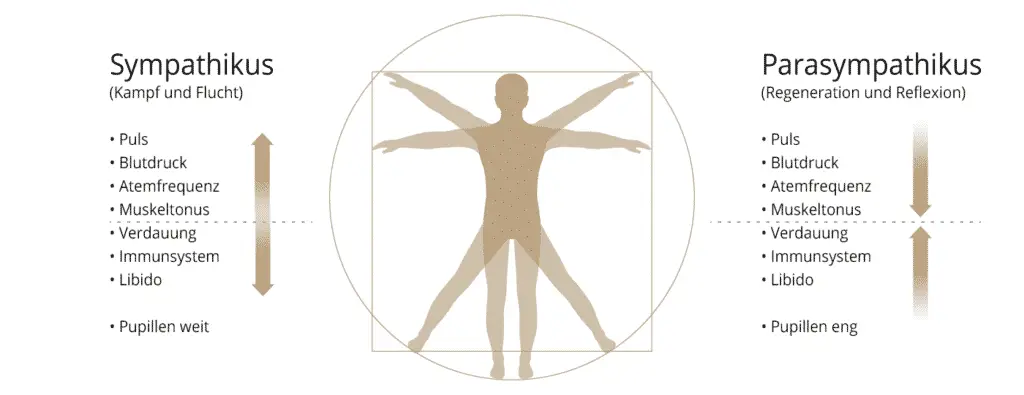Wie funktioniert Regeneration durch frequenzmodulierte Musik?
Acoustic signals play a central role in the activation of our autonomic nervous system. Since immemorial times, certain sound waves have meant danger, while others have had a calming effect on our system. When transmitting sound wave information to the brain, the tiny muscular stapedius in the inner ear plays an important role.
Our individual reactions to certain sounds are partly innate, but also acquired and learned through experience.

And our brain always reacts in the same way:
Signals a sound danger, the sympathetic nerve is activated, the part of our vegetative nervous system that prepares us for a fight or escape. All the required physical reactions are initiated.
Signals a sound safety, the ventral (anterior) portion of the parasympathetic nervous system is controlled, which calms and relaxes our system.

Also, there is a second part of the Parasympathicus, the dorsal (posterior) strand, which is activated when we can neither escape nor fight and that leads to the so-called “dead-reflex”.
Scientists, especially the American brain researcher Stephen Porges, experimentally unveiled, which special frequencies activate the ventral Parasympathicus (part of the polyvagal theory) and that these relaxing-acting frequency modulations can be audio technically imitated.
By regularly listening to proper edited music, the brain is trained to bring the body and mind quickly and purposefully into a relaxed stage.
This enhances the ability to specifically regenerate, with all the positive effects on sleep, concentration and performance.

